I received an email from Angus Winchester’s mailing list today that has revolutionised my future tasting notes for this blog in a small but brilliant way.
For those of you who haven’t heard of him, Angus is a bona fide cocktail legend (he has no less than three drinks named after him). The guiding light of Trailer Happiness (London’s best rum bar), where he founded the Rum Club, Angus was one of the original International Playboy Bartenders and is now a globe-trotting drinks evangelist who, amongst many other things, works for Diageo as Global Ambassador for Tanqueray (he is working towards the title of Gin Genius) as well as spreading the cocktail word with his own bar consultancy, Alconomics.
In the course of his research, Angus has come up with what must be the best list of drink-related colours ever amassed. Now, I’ve never been one to talk about a whisky’s colour much, unless it’s particularly pale, dark or unusual (eg Green Elgin, which I now know is olivaceous), but I do love the English language and vocabulary, and anything that improves it gets a big thumbs up from this blogger (although obviously that doesn’t mean I’ll tolerate any comments from smart-arsed pedants about my own dubious grammar or syntax!).
From this day forth, any tasting notes that I do on here will have a bit more colour, to wit a descriptor from the below. In the face of such an outstanding piece of work it would be churlish not to. In fact, I love this list so much that I’ve christened it Colour Me Goodd (with apologies to readers of a certain age who had managed to forget about ‘I Wanna Sex You Up’).
aeneous shining bronze colour
albicant whitish; becoming white
amaranthine deep purple-red colour
atrous jet black
aurulent gold-coloured
badious chestnut-coloured
castaneous chestnut-coloured
castory brown colour; brown dye derived from beaver pelts
chlorochrous green-coloured
citreous lemon-coloured; lemony
filemot dead-leaf colour; dull brown
ibis a pale apricot colour
icterine yellowish or marked with yellow
icteritious jaundiced; yellow
jacinthe orange colour
jessamy yellow like a jasmine
kermes brilliant red colour; a red dye derived from insects
luteolous yellowish
luteous golden-yellow
lutescent yellowish
madder a reddish or red-orange colour
melanic black; very dark
melichrous having a honey-like colour
nigricant of a blackish colour
nigrine black
ochroleucous yellowish white
olivaceous olive-coloured
puccoon dark red colour
pyrrhous reddish; ruddy
rubiginous rusty-coloured
rubious ruby red; rusty
rufous reddish or brownish-red
russet reddish brown
sorrel reddish-brown; light chestnut
spadiceous chestnut-coloured
titian red-gold or reddish-brown
umber brownish red
vinaceous wine-coloured
vinous deep red; burgundy
violaceous violet-coloured
vitellary bright yellow
xanthic yellow; yellowish
zinnober chrome green
Come on, what’s not to love? The above has been printed off and will reside just behind my monitor at work, where I can contemplate it while preparing for a tasting. My particular favourites are lutescent, melichrous, ochroleucous and spadiceous. Granted, I probably won’t get to use a few of them (in fact I hope I never have to use amaranthine and I’d be pretty freaked out if you gave me a kermes whisky) but I hope you’ll join me in doffing caps to Angus Winchester for producing something that makes the world a better place.
Let me know your favourite in the poll I’ve set up in the side-bar…
Slainte,
Tim


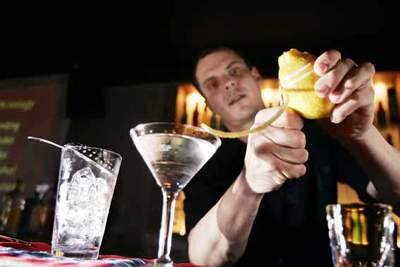
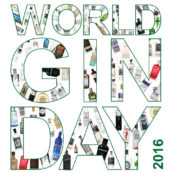
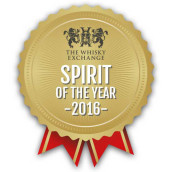
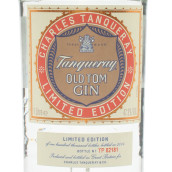
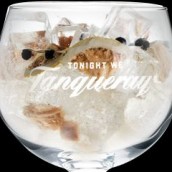




 Enjoy responsibly
Enjoy responsibly
Comments
At this juncture I’m going to have to invoke this wonderfully witty little thought I came across somewhere. Attributed to Unknown.
“English doesn’t borrow from other languages. English follows other languages down dark alleys, knocks them over, and goes through their pockets for loose grammar.”
Or, in this case, vocabulary. Most of these are inescapably Latin, in origin or modulation. But I’m sure we’ll all forgive you and Angus, since it is a wonderful tool to make oneself appear even more snooty. 😛
Oh come on, Tim, you are projecting the vivacious (that’s no colour) and lightheadedness of the cocktail set on the serious whisky world 😉
Gotta get me head around the sentence that;s going to look like: a vittilary whisky and with water it almost went ochroleucous. And that was the non-peated variety.
Good luck! Haha..
BTW. I have to congratulate TWE on the excellent Port Askaig series. I almost finished of a CS already!
I totally approve of this, although I think I would be more concerned about a zinnober whiskey than anything else.
I’m afraid I can’t agree with this.
The club of whisky drinkers is already pretty small and self selecting. Adopting jargon like this – while scientifically it may perhaps be accurate – is more suited to Master Blenders or someone working at the Whisky Research Institute than a blog that is looking to expand the pool of scotch drinkers, and knowledge of those who are already alert to the pleasures of a good dram.
I have no desire to refer to a secret decoder ring to determine what color a scotch is when reading tasting notes.
I took some time to write up a more thorough response on my own whisky blog. I hope you will check it out:
http://whiskyparty.net/?p=167
That’s terrible. You expect me to remember any of that after tasting a few drams? Plus the colours are in no sort of scale from lightest to darkest – just alphabetical. My head hurts already.
[…] am a big fan of the Whisky Exchange and their blog, but I have to take issue with a post today by Tim F. On the advice of Angus Winchester, Diageo’s Global Ambassador for Tanqueray, Tim has decided […]
How about a conditional rule…no colour comments in the review unless you’re 100% sure that no caramel coloring has been added.
Cheers for the comments, gents!
Great quote, InkRose!
Glad you liked the PA, bgulien
Whisky Party – I read your post. Please don’t take this too seriously, it’s just a bit of fun. I’d never be so cruel as to use one of these words without a translation as well!
I hope we can meet up sometime and you’ll see I’m all about inclusiveness and getting new people into whisky. I do all I can to demystify and myth-bust the subject whenever possible.
Jeff, the caramel issue is very important and if I know a whisky contains it, I’ll be sure to mention it. It’s one of my pet hates.
Good to know. I thought perhaps the whole thing might be in jest, but nothing indicated that you were less than serious.
Sometimes not all humor translates online.
cheers.
[…] I’m going to say Ochroleucous (Yellowish-White) as it’s pretty pale, exactly as you’d expect from young […]
Lordy folks… I can’t really believe that you would take this THAT seriously…
I would opine that perhaps those that take this post/list so seriously probably take the whole whisky thing too seriously and fall foul of the very problem they accuse us of…
Drinking whisky is enjoyable and any of these words, used in the right context will surely bring a smile to a face… but most words you use are always relative…what is familiar to you may well be unfamiliar to others…
Here is a great article about it
http://www.whiskymag.com/nosing_course/part3.php
But dont think because I am a bartender that I am trying to confuse but to have fun and i have to say I have done a lot to encourage people to drink malt.
aw
Amen, Angus – although as WhiskyParty says, not all of my humour translates online to our guests from across the pond.
Thanks again for the list, and also for the link to Charlie’s piece.
Tim
[…] to the French wine casks (good-quality Burgundy) in which some of the spirit was matured. On the Colour Me Goodd scale, this is luteous or […]
[…] On the Colour Me Goodd scale, this is aurulent (golden) or luteous (golden yellow). Impressive […]
[…] Colour: I’m going to say that this is xanthic on the Colour-Me-Goodd scale. […]
[…] 1977 Deoch an Doras Colour: On the Colour Me Goodd scale I’m going to say that this is somewhere between titian and castaneous or […]